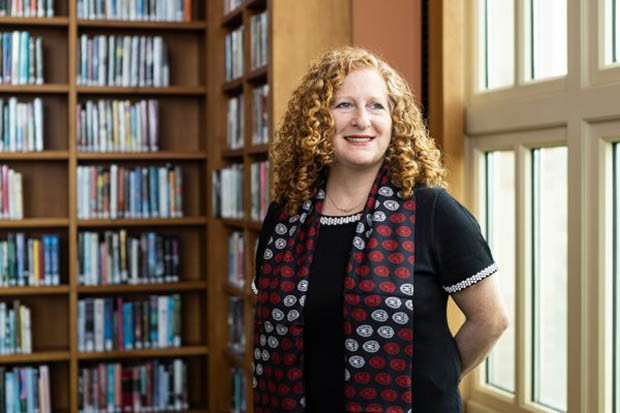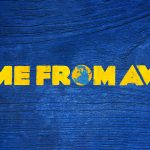UW Tribal Tuition Promise Divides Native Communities
Questions over who is eligible for tuition support and program's success rate.
UW-Madison freshman Arianna Reiter is part Stockbridge-Munsee and part Menominee Native American. She grew up on the Stockbridge-Munsee reservation and later attended the Indian Community School in Milwaukee.
But despite her identity as a Native American, she’s 1/16th short of being eligible for enrollment in the Stockbridge-Munsee tribe, which means she is ineligible for UW-Madison’s tribal tuition promise program. The program, announced late last year, will cover all the costs of education for enrolled members of Wisconsin’s federally recognized tribes.
UW-Madison Chancellor Jennifer Mnookin said that creating the program “felt like the right thing to do” for the state’s Native American students to improve the school’s relationship with the state’s 11 tribes. UW-Madison sits on traditional Ho-Chunk Nation land while the Universities of Wisconsin system earns approximately $1 million per year from a land trust made up of largely former Ojibwe land, the Examiner reported earlier this month.
While Reiter is missing out on thousands of dollars of savings, she says the announcement brought up feelings that have persisted since her childhood of “not being Native enough.”
“Some [people] look at you differently,” she says. “I’m just that tiny fraction short.”
The creation of the program has sparked a debate among Native communities in the state over the use of enrollment, the university’s effort to make up for the past with offers of money and how Native students are treated once they’re on campus. The program is also being launched as diversity, equity and inclusion programs have become a major issue for Wisconsin Republicans who see such efforts as malicious attempts to give certain groups more opportunity than white students.
Native American tribes across the country use a system known as “blood quantum” to determine enrollment eligibility. First instituted by the federal government, blood quantum tracks the percentage of Native “blood” someone has. Different tribes require different blood quantum percentages to be eligible for enrollment.
The Stockbridge-Munsee require one-quarter Stockbridge-Munsee blood to be eligible, which leaves Reiter ineligible because the Native side of her family also includes Menominee heritage.
Native educator Mark Denning says he sees the use of tribal enrollment as the metric for the tuition program as insulting because it uses the government’s definition of who qualifies as Native. He pointed to efforts from the American Medical Association to discourage medical schools from using blood quantum as a metric for recruiting Native students.
“It’s like after the crime, the perpetrator needs to dictate the terms of what justice looks like,” Denning says. “It’s more perpetration, it’s more of a power exercise and control over our lives. It even uses a federal system of defining who we are as a people to leverage their generosity. It’s intellectually, morally and ethically bankrupt.”
When the tuition program was announced, Mnookin said campus diversity was one of the key factors in its creation.
“I have said and will continue to say that diversity is a core value for us as an institution here at UW Madison,” Mnookin said at a press conference announcing the program. “And this program is another example of the ways that that is and will continue to be true.”
Yet the program’s use of enrollment, according to UW-Madison law professor Richard Monette, is to avoid the legal challenges that would likely come with similar diversity-focused efforts. Because tribal enrollment is a political designation, not a racial one, the program can avoid the legal challenges similar to the one that struck down affirmative action in college admissions last year.
“So if this tuition waiver were not based on tribal membership, it would be race based, and it would suffer a defeat at the hands of a constitutional challenge based on equal protection,” Monette, who teaches federal Native American law and is a past president of the National Native American Bar Association, says.
Monette says that when debating laws involving Native Americans, there is a difficult balance to be walked between individual identity and group identity. He says that protecting the group identity is important because it protects tribal sovereignty.
“The problem is, my gut reaction is that this doesn’t sit well in America and it doesn’t sit well for racial minorities, that’s the point,” he says. “But it does sit well for these domestic sovereigns. So those are the good things, it bolsters sovereignty, it bolsters the recognition of territory historically and today, it bolsters the idea of a distinct peoples historically and today and because of all that, it will pass constitutional muster, it will survive a constitutional challenge.”
In an email, Carla Vigue, UW-Madison’s director of tribal relations, said eligibility was chosen after consulting with the state’s tribes because of the legal status enrollment represents.
“The Chancellor and I worked in consultation with the state’s 11 federally recognized tribes to develop the Wisconsin Tribal Educational Promise program,” Vigue said in the email. “After reviewing similar programs at other universities, in a series of meetings, we discussed with tribal leadership all aspects of the program including eligibility. We all agreed that students must be a Wisconsin resident and be verified as an enrolled member of any one of the eleven federally recognized American Indian Tribes in Wisconsin. Tribal enrollment is a specific legal status grounded in the US Constitution. Using federal recognition as a criteria for the program acknowledges this particular status and ensures that we are adhering to certain race-based laws as we are working with sovereign nations and their citizens.”
Beyond how the university defines eligibility for the program, Denning says if administrators want to encourage more Native students to attend UW-Madison, they need to do a better job taking care of those Native students once they arrive on campus.
Denning’s daughter died by suicide while she was a junior at UW-Madison, which for him is enough evidence that the university isn’t capable of taking care of its Native students. He adds that every year, many of the Native students on campus don’t return.
“If we start with 30 [Native] students, we’re losing 10 a year,” he says. “By the time we get to graduation, we’re lucky if we have five or six. So this is a hell of a business deal for UW to look really good.”
Mark Freeland, director of UW-Milwaukee’s Electa Quinney Institute for American Indian Education, says there are examples of similar programs across the country in which Native students receive tuition waivers but the support services aren’t there to follow that up, so the graduation rate of those students is low. He pointed to programs at Syracuse University and in Michigan where a lot of work had to be done to make sure students were being retained.
“There is no doubt a significant responsibility to make sure that you have the support systems necessary,” he says. “We don’t collectively have enough fingers and toes to point at the number of higher education initiatives to help recruit Indigenous students that have fallen flat because they’ve failed to take seriously what the support networks are going to be.”
“I’m usually critical of endeavors that just provide money,” he adds. “That’s a very simple settler response. It’s like, ‘Oh we’ll just give you more money to come here,’ and it’s bigger than just higher ed. It’s important to know that the levels of support have to develop a full, holistic response in the university.”
Vigue said that supporting Native students on campus is “a priority and ongoing commitment for all of us.”
UW Tribal Tuition Promise divides Native communities over use of enrollment for eligibility was originally published by Wisconsin Examiner.






















